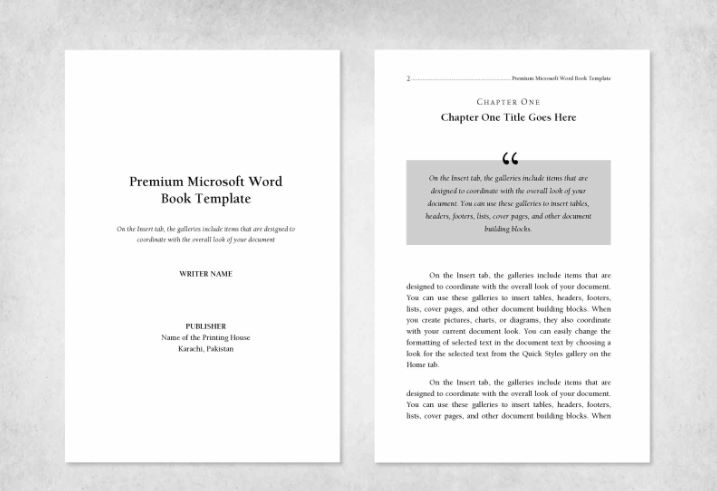Writing a book is a dream for many aspiring authors. However, translating an idea into a compelling narrative can be challenging without effective book-writing strategies. The right techniques not only make the writing process smoother but also help to create engaging stories that captivate readers. Here, we’ll explore ten powerful strategies to enhance your storytelling skills and turn your story ideas into compelling or writing books.
Why Are Book Writing Strategies Important?
Before diving into specific strategies, it’s essential to understand why book-writing strategies are crucial. Developing a framework for writing can:
- Save Time: A well-thought-out plan prevents you from wasting time on unnecessary revisions.
- Organize Ideas: Strategies help you structure your thoughts, ensuring a smooth flow in your narrative.
- Avoid Creative Blocks: Having strategies in place can reduce the likelihood of encountering creative blocks.
- Ensure Consistency: Strategies promote consistent tone, language, and pacing, essential for keeping readers engaged.
- Enhance Story Quality: A clear approach to writing can elevate your story, making it more compelling and memorable.
With these benefits in mind, let’s explore ten actual book-writing strategies to help you craft stories that resonate.
1. Start with Free Writing to Spark Ideas
Sometimes, the best way to begin writing is by engaging in free writing. Free writing involves spending a few minutes jotting down thoughts, ideas, or words without worrying about structure or grammar. This technique can be especially helpful in brainstorming sessions, allowing you to uncover new ideas and possible story directions.
How Free Writing Helps:
- Helps unlock creative blocks by releasing pressure to be perfect.
- Encourages brainstorming, which can lead to unique concepts and fresh story ideas.
- Allows writers to explore without commitment, making it easier to find a great idea.
2. Outline Your Story Structure
A solid outline is one of the most valuable tools in a writer’s arsenal. By developing a clear outline, you create a roadmap that guides your writing process and ensures a coherent story structure.
Key Elements of a Story Outline:
- Beginning, Middle, and End: The classic three-act structure is a reliable framework.
- Character Arcs: Map out character development to ensure consistency.
- Plot Points and Subplots: Determine the main events and any secondary plots that add depth to the story.
Outlining helps you create a rough idea of the story’s direction, making it easier to write with purpose and focus.

3. Develop Well-Defined Characters
Characters are the heart of any story. Creating compelling, relatable characters will keep readers invested. A good character profile should include their backstory, motivations, strengths, weaknesses, and growth journey.
Strategies for Character Development:
- Ask “What If?†Questions: These questions reveal how your character might react in different situations.
- Understand Motivations: Define what drives your characters to give depth to their actions.
- Use Realistic Dialogue: Crafting dialogue that reflects each character’s personality and background makes them more believable.
Well-developed characters can make the difference between a story that feels real and one that feels flat.
4. Set Clear Writing Goals
Setting realistic, achievable goals is essential for long-term motivation and productivity. Many writers find it helpful to establish daily, weekly, or even chapter-specific goals.
Tips for Setting Writing Goals:
- Word Count Goals: Aim for a specific number of words each day.
- Time Goals: Dedicate a set amount of time to writing every day.
- Milestone Goals: Break your book down by chapters or major plot points.
Clear goals keep you moving forward and help you avoid losing momentum in your writing journey.
5. Focus on Show, Don’t Tell
“Show, don’t tell†is one of the most effective storytelling techniques for engaging readers. Rather than telling readers how a character feels, show it through actions, reactions, and sensory details.
Example of Show, Don’t Tell:
- Telling: “Sarah was nervous.”
- Showing: “Sarah’s hands trembled as she clutched the letter, her breath coming in quick, shallow gasps.”
This approach allows readers to experience the story with the characters, making for a more immersive experience.
6. Create Conflict and Tension
Conflict and tension are the driving forces of any compelling story. They keep readers on the edge of their seats and make your narrative dynamic.
Types of Conflict to Consider:
- Internal Conflict: A character struggling with their own beliefs or emotions.
- External Conflict: Conflicts with other characters, society, nature, or fate.
- Relational Conflict: Tension between characters, often adding complexity to relationships.
Balancing these conflicts throughout the story maintains reader’s interest and gives the plot depth.
7. Write Consistently to Build Momentum
Consistency is key to finishing any writing project. Schedule dedicated writing time daily, even if it’s only a few minutes, to build momentum and make writing a habit.
Tips for Consistent Writing:
- Create a Writing Routine: Establish a specific time and place for writing.
- Avoid Editing Midway: Resist the urge to perfect every sentence; focus on getting words on the page first.
- Set Small Goals: Small milestones prevent burnout and give you a sense of achievement.
Consistency not only helps you complete your book but also strengthens your writing skills over time.
8. Seek Feedback Early and Often
Getting feedback is essential for refining your work. While writing can be a solitary process, feedback from readers, fellow writers, or a professional editor offers new perspectives.
How to Gather Useful Feedback:
- Beta Readers: Find readers who can provide honest insights into your story.
- Writing Groups: Many writers join groups where members review each other’s work.
- Professional Editors: If budget allows, a professional editor can offer invaluable advice on structure, pacing, and character development.
Feedback helps you identify blind spots and refine your writing, making the story stronger.
9. Edit in Layers
Editing is a critical step that turns a rough draft into a polished manuscript. Editing in layers—focusing on different aspects in each pass—allows you to address various elements without overwhelming yourself.
Layered Editing Approach:
- Content Editing: Start by looking at story structure, character development, and plot.
- Line Editing: Refine sentence structure, word choice, and flow.
- Proofreading: Focus on grammar, punctuation, and spelling.
This approach ensures that you cover all areas thoroughly, resulting in a more professional and engaging final draft.
10. Use MyBookWriters for Expert Assistance
Writing a book can be a daunting task, but there are many benefits writers could take such as from professional guidance to bring their stories to life. At MyBookWriters, we specialize in helping authors at every stage of the writing process.
Services MyBookWriters Offers:
- Ghostwriting: For those with a story idea but lacking time or experience, ghostwriting is an ideal solution.
- Editing and Proofreading: Our editors polish manuscripts to ensure they are ready for publication.
- Developmental Feedback: We provide in-depth feedback on story structure, character arcs, and pacing.
- Custom Book Plans: Our team can help you create a detailed outline, so you have a clear plan from start to finish.
MyBookWriters has several options tailored to meet each writer’s unique needs. Whether you’re looking to write a novel, non-fiction book, or memoir, our team of experienced writers and editors can help turn your story into a compelling narrative.

Final Thoughts: Start Writing Your Story Today
Writing a book is a rewarding journey filled with challenges and triumphs. With these ten book writing strategies, you have a toolkit to guide you from start to finish, helping you overcome obstacles and create stories that captivate readers.
Ready to Begin? If you’re passionate about writing but unsure where to start or need professional support, MyBookWriters is here to help. Explore our range of services, and let us assist you in bringing your story to life. Don’t wait—take the first step in crafting a compelling story that resonates with readers worldwide.
FAQs
1. What are the 7 steps to writing a story?
The 7 steps to writing a story include generating an idea, outlining the structure, developing characters and setting, building a plot, writing a draft, and revising. Following these steps ensures a clear, engaging story from concept to completion.
2. How to craft a compelling story?
Start with a strong hook, develop realistic characters with relatable motivations, build tension through conflict, and keep the plot focused. Add emotional stakes to keep readers invested, and finish with a satisfying resolution.
3. How to write a compelling storybook?
Outline your story with a clear beginning, middle, and end. Use vivid descriptions, relatable characters, and dynamic dialogue. Keep a consistent theme, maintain pacing, and edit for clarity and engagement.
4. What is the structure of a compelling story?
A compelling story generally follows a structure: Exposition (introduce characters and setting), Rising Action (build conflict), Climax (peak tension), Falling Action (resolve conflict), and Resolution (conclude the story). This classic arc keeps readers engaged and gives the story depth.



